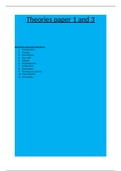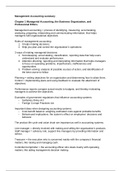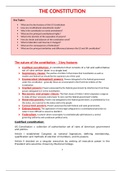College aantekeningen
IB HL/SL History Paper 2 - Authoritarian States: Comparison between the Consolidation and Maintenance of Power for Adolf Hitler and Mao Zedong
- Vak
- Instelling
- Boek
With these notes, I was able to attain a grade 7 in HL History during the 2018 November IB Exam Session. A grade 7 is the highest score attainable for this subject. This set of notes will be relevant to those taking IB HL AND SL History PP2 - Authoritarian States. It specifically focuses on the c...
[Meer zien]







